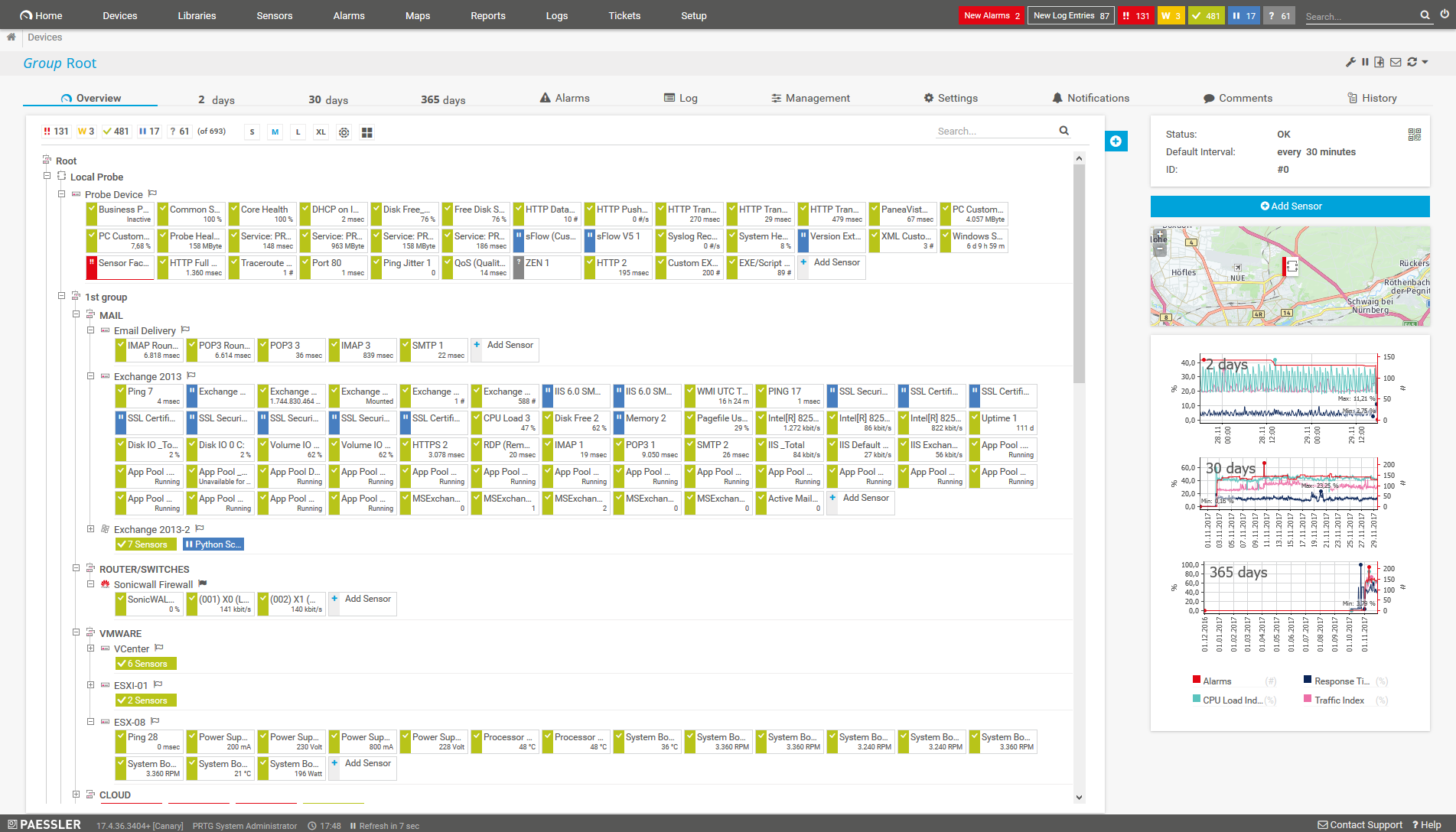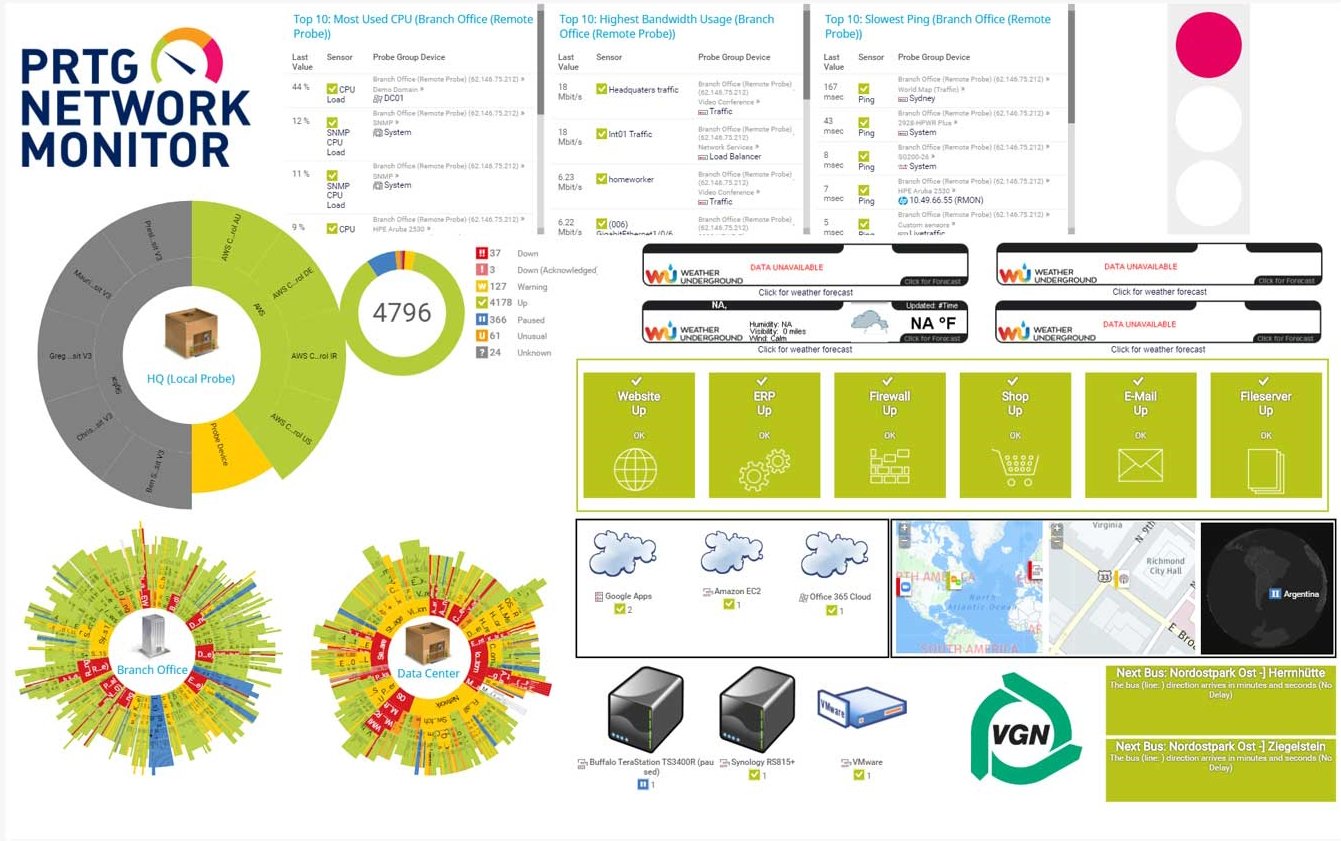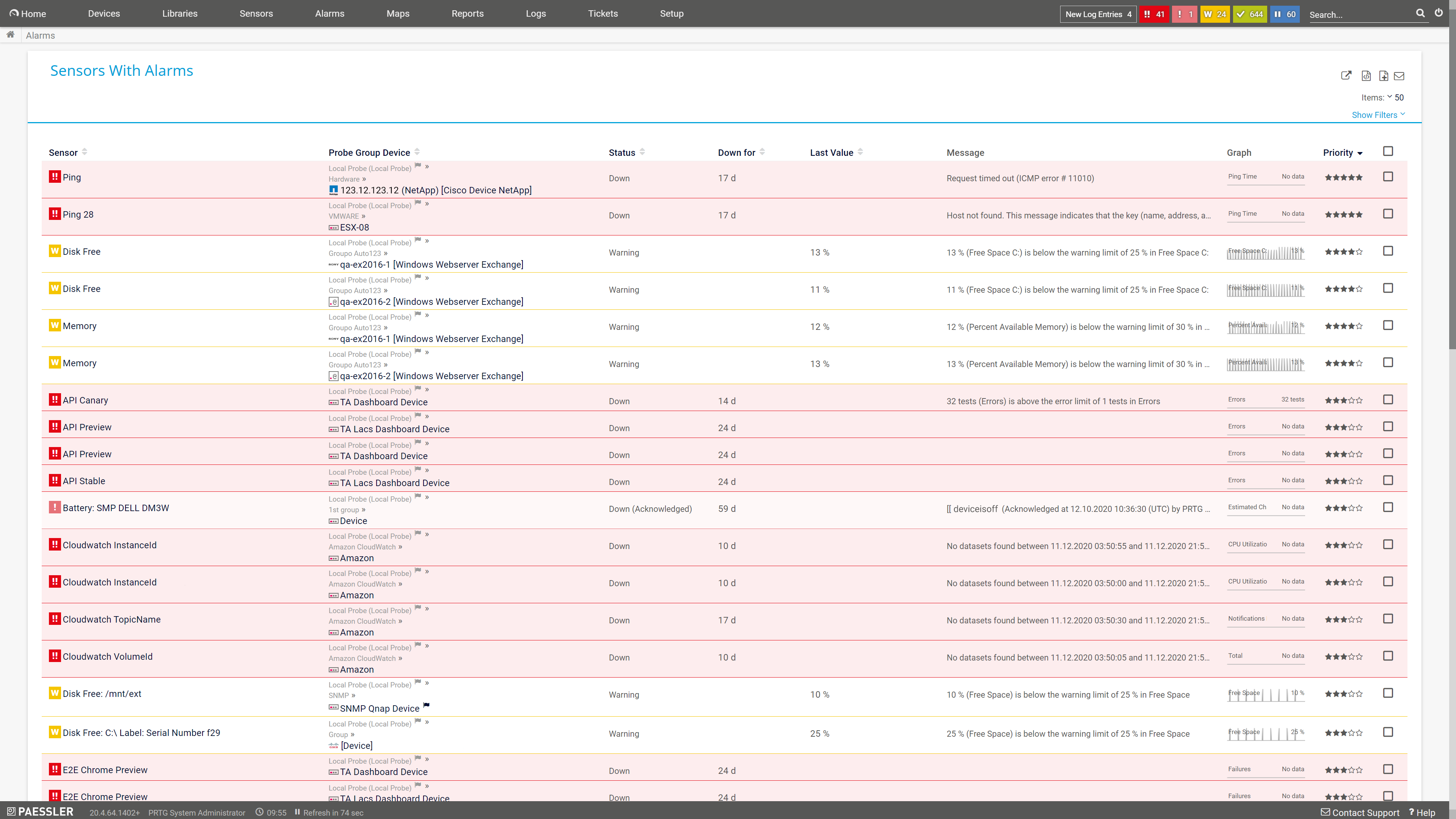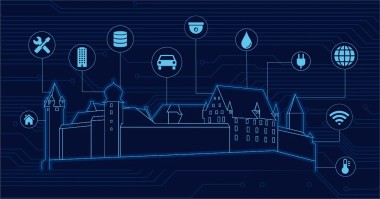Modern e-government does more than streamlining processes with the help of digital resources – it also needs to integrate the demands of numerous stakeholders, many legal frameworks, and strict data protection rules. These requirements make it crucial to always keep an eye on government IT infrastructure.
Both internal processes and citizen services highly depend on an available and high-performance network. In addition, critical government IT systems need to be error free, sensitive data needs to be protected, and attacks warded off. To address these challenges and make sure that government IT is reliable and secure, it is important to monitor your systems round the clock.
Whether it's the branch office of a public authority, a local authority in a regional district, or several public data centers: almost all IT departments of public institutions are faced with the task of managing and maintaining distributed locations.
This makes it crucial to be able to collect monitoring data from all these remote sites and send it in an encrypted form to a central monitoring solution, which analyzes and stores the data and sends alerts in case of an issue.
Integrating branch offices, existing on-premises & cloud infrastructures, hardware and software, virtualization: networks of public institutions are heterogeneous, and interoperability is key.
Often, devices and applications offer their own monitoring tools, which results in a multitude of single solutions for the same task. Although these tools can provide some insights, they contribute little to an overview of the entire IT network like all-in-one monitoring tools.
Authorities and public institutions manage sensitive data of their citizens that need to be protected at all costs. Together with public utilities, local authorities ensure the supply of water, electricity, and gas. The local fire and police departments must always be ready for action.
All this can only be implemented with a highly reliable and secure IT landscape that integrates seamlessly with government IT security & data protection regulations.
Diagnose issues with your e-government infrastructure by continuously monitoring your hardware, applications, bandwidth, availability, and more. Show monitoring data in real time and visualize it in graphic maps & dashboards to identify problems more easily. Gain the visibility you need to troubleshoot issues before they become critical.

Device tree view in PRTG with hierarchical structure

PRTG map showing detailed IT infrastructure

Overview of all warning and error alerts detected by PRTG sensors
“Excellent tool for detailed monitoring. Alarms and notifications work greatly. Equipment addition is straight forward and server initial setup is very easy. ...feel safe to purchase it if you intend to monitor a large networking landscape.”
Companies around the world trust PRTG Network Monitor when it comes to ensuring that their IT systems run smoothly.
Airdrie is a city in Alberta, Canada. The City of Airdrie deployed PRTG and today it’s considered a very strong asset for the team. Presently, more than 1,000 PRTG sensors are in use throughout the city’s network and report on everything from bandwidth consumption to the monitoring of broadband radio links and the disk space on servers including the corporate email and file servers.
Nördlingen is a city located in Bavaria, Germany. Its local government has offices in 15 locations around the city and 300 employees assist Nördlingen citizens with everyday administrative concerns. To optimize the quality of its services and ensure smooth-running operations between the various departments of the public institution, it keeps a constant eye on its IT network with the help of PRTG.
The Fire Brigade Flemish-Brabant West is responsible for the 24/7 protection of 600,000 inhabitants of the Brussels outskirts. This safety region consists of 9 fire stations, an administrative center and a warehouse, all spread over 33 municipalities. Its ICT team needs a clear overview of historical and current measurement results and data, like CPU load and bandwidth, which it collects with PRTG.
Partnering with innovative IT vendors, Paessler unleashes synergies to create
new and additional benefits for joined customers.
baramundi and PRTG create a secure, reliable and powerful IT infrastructure where you have everything under control - from the traffic in your firewall to the configuration of your clients.
Asset visibility is a big problem for many IT teams. Not having an accurate inventory of tech assets is inefficient, costly and a potential security risk.
Osirium’s experienced management team has an outstanding track record in cybersecurity and automation, establishing its headquarters near Reading, UK.

Discover how the local energy supplier SÜC in cooperation with the network operator süc // dacor implemented a LoRaWAN network for the urban and surrounding areas of Coburg to make environmental and city monitoring possible.

Read about how the so-called Government 3.0 is beginning to shape the future of government IT in times where administrative and business process management, the Internet of Things, big data, blockchain, and sophisticated monitoring are all driving public sector innovation.
This white paper introduces Paessler PRTG as a reliable solution for monitoring your government IT systems. Get an overview of how network monitoring can help overcome challenges with e-government operations and become a key component in government IT optimization.
The term e-government describes the use of technical resources to provide public services to citizens in a region or a whole country. In principle, this covers all mutual relationships: It consists of the digital interactions between citizens and the government, between a central government and government agencies or regional institutions, between a government and its citizens, between the government and its employees, and finally, between government and businesses. E-government and Government 2.0 are sometimes used interchangeably, with Gartner defining the latter to have the following 7 characteristics. It
In the meantime, areas such as big data, the Internet of Things (IoT), administrative and business process management, blockchain, and sophisticated monitoring are all driving innovation in the public sector, creating improvements in service delivery, resource management, and decision making. This transformation is often referred to as Government 3.0
The term e-government describes the use of technical resources to provide public services to citizens in a region or a whole country. This covers digital interactions between various stakeholders:
Government IT monitoring refers to the process of overseeing and analyzing the IT systems and infrastructure used by government agencies. It involves the continuous surveillance and examination of various aspects of these systems, such as networks, servers, databases, applications, and user activities.
The primary goal of government IT monitoring is to ensure the efficiency, security, and proper functioning of the IT environment, while also maintaining compliance with relevant regulations and policies. Government IT monitoring is an essential part of maintaining a robust and secure IT infrastructure for public services, safeguarding sensitive data, and providing efficient and effective government operations.
Government IT monitoring tools are designed to facilitate the monitoring and management of IT systems within government agencies. They play a crucial role in ensuring the performance, security, and compliance of the government's IT infrastructure. Government IT monitoring software typically provides a centralized platform for IT administrators and cybersecurity teams to monitor, analyze, and respond to various aspects of the IT environment, thus contributing to efficient and secure government operations.
Here are some key functions of government IT monitoring software:
In PRTG, “sensors” are the basic monitoring elements. One sensor usually monitors one measured value in your network, for example the traffic of a switch port, the CPU load of a server, or the free space on a disk drive. On average, you need about 5-10 sensors per device or one sensor per switch port.